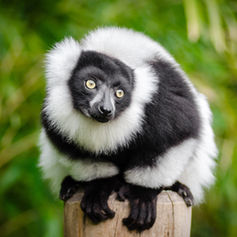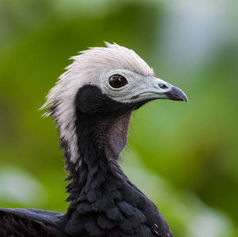top of page

Domesticated vs. Wild
To understand how a place like the Wildlife Center works, it’s important to learn the difference between domesticated and wild animals, as well as wild animals that live in human care. A domesticated animal is one that has been altered physically and behaviorally for human benefit, usually over the course of hundreds or thousands of years, to the point that in no longer behaves or resembles its wild ancestors. Not many animals are suitable for domestication, which is why our ancestors domesticated so few species. Fully wild animals generally avoid or ignore humans, and are on their own using the adaptations nature has given them to survive in the wild. At the Wildlife Center, you will find wild animals with natural instincts living as wild as possible in human care, free of the stresses and hardships of surviving in the wild, for the purpose of preserving the little wild that is left on Earth.
Preserving the Wild
If preserving natural instincts is so important, why do zoological facilities and places like the Wildlife Center allow visitors? We firmly believe that one of the most effective ways to help wildlife around the world is to educate and inspire the general public. By allowing visitors to see and learn about these incredible species in the flesh, they gain a new perspective on issues that may seem far away and untouchable to them. The proceeds generated from visitations keeps our animal residents enriched, well-fed, and keeps our international conservation efforts going strong. In short, visitors are a crucial part of our mission now, and for the future.
For the Future
The way we treat our animal residents promotes their natural behaviors and instincts. Under human care, their genes are preserved and are part of a vast genetic pool spanning many renowned zoological facilities across the country through partnerships and breeding programs. Should these animals become extinct in the wild, there will be individuals safe in human care who can contribute to saving the species by maintaining genetic diversity. Keeping animals in a protected environment allows for scientists and conservationists to study them, as well as the general public to learn about them, without having to travel to remote regions of the Earth. This is one essential way that organizations like the Wildlife Center are stepping up to save the natural world before it is too late.

SPECIES IN RESIDENCE


























SPECIES
OCCURRING NATURALLY

























bottom of page
